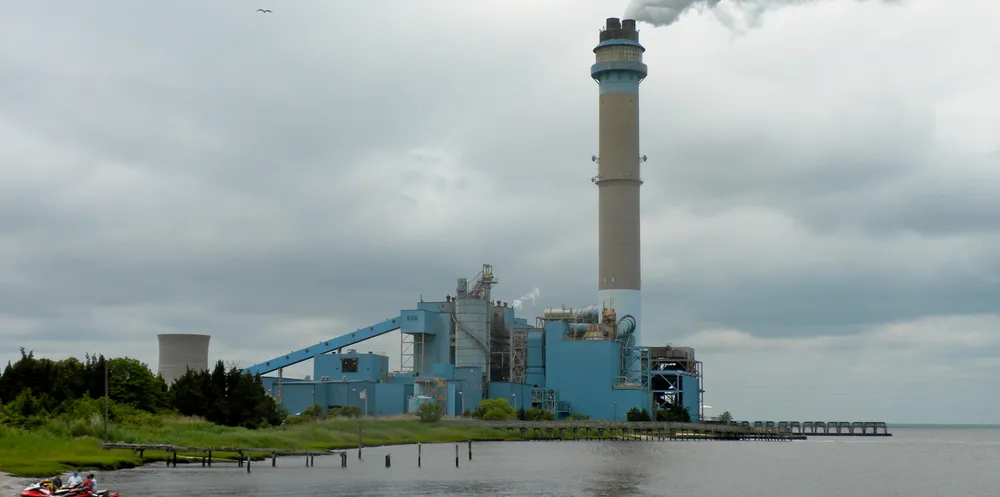Race to build offshore wind-fuelled US regional power grid heats up with PSEG-Orsted bid
New Jersey state utility in partnership with international sector pacesetter joins 12 other bidders in contest to construct multi-billion dollar transmission project

<b>Focus your mind: get the insight you need with the Recharge Agenda</b>
The global energy transition is gathering momentum – and the accompanying news-stream becoming an information deluge. Separate the green giants from the greenwash and the hard facts from the click-bait headlines with Recharge Agenda, our curation of the market-making events of the week, distilled down into one quick-read newsletter. Sign up here for free
Along with PSEG-Orsted, which are bidding under Coastal Wind Link banner, the state has attracted 69 proposals from utilities and merchant transmission developers, including from grid developer Anbaric, as well as the US’ largest renewables operator, NextEra, and New York utility Con Edison.
The solicitation, initiated by the New Jersey Board of Public Utilities (BPU), is the first to incorporate PJM's new state agreement approach (SAA) transmission planning process that allows the grid operator to incorporate state public policy goals such as the development of offshore wind into its regional transmission expansion plan. Grid expansion plans typically target only reliability or market-efficiency criteria.
Coastal Wind Link’s suite of seven proposals meets all four objectives of PJM's solicitation, including upgrade of existing onshore transmission facilities, construction of new onshore and offshore infrastructure, and the creation of a grid at sea. The bids from Coastal Wind Link offer both 325kV and 400kV high voltage direct current (HVDC) export line options from offshore substations near the upcoming New York Bight lease area to as many as three landing sites some 90km away.
Several bids would leverage existing PSEG assets, such as the site of the 538MW Sewaren gas-fired combined cycle power plant currently operating in densely populated northern New Jersey.
New Jersey has taken the lead in in planned offshore wind transmission, addressing a key bottleneck in the US efforts at installed 30GW of offshore wind energy by 2030.
“Strategically planned and competitively procured transmission will... [minimise] transmission bottlenecks, reduce grid connection risks, minimise environmental and fisheries impacts, and increase competition between wind farm developers,” Janice Fuller, mid-Atlantic president for Anbaric Development, told the a US House of Representatives’ subcommittee last month.
Who's who in the New Jersey offshore wind transmission auction
- Anbaric Development Partners
- Atlantic City Electric Company
- Atlantic Power Transmission, a Blackstone Infrastructure Partners company
- Con Edison Transmission
- Jersey Central Power & Light Company
- LS Power Grid Mid-Atlantic
- Mid-Atlantic Offshore Development, a joint venture of EDF Renewables and Shell New Energies US
- NextEra Energy Transmission MidAtlantic Holdings
- Outerbridge New Jersey, a subsidiary of Rise Light & Power
- PPL Electric Utilities
- PSEG Renewable Transmission & Orsted Transmission Holding
- Public Service Electric & Gas Company
Yesterday (Wednesday), Atlantic Power Transmission, a Blackstone portfolio company, announced its bid into the solicitation for up to 3.6GW of transmission capacity, expected to bring $1.3bn in economic value, and the company announced agreements with a consortium of labour unions to provide hundreds of union jobs.
As part of the SAA, the costs for the upgrades will be borne by New Jersey ratepayers, who currently pay $0.14/kWh in September versus $0.11/kWh national average. Coastal Wind Link’s options will cost between $2bn to $7bn.
PJM and the New Jersey BPU will jointly evaluate proposals by the second half of 2022, with the state retaining the right to move forward with any projects. The state could also mix-and-match proposals from several developers.
Transmission projects faces similar permitting and regulatory hurdles that all infrastructure projects confront as well as local opposition concerns, and constructability will be a major factor in the decision-making process.
PSEG has acquired right-of-way options for onshore transmission routes to its proposed collector stations and has conducted federal pre-permitting as well as community outreach. The utility claims a track record of successful transmission development in the state.
New Jersey has already awarded nearly 4GW of offshore wind capacity, including 1.51GW to Atlantic Shores, an EDF Renewables-Shell New Energies joint venture, as well as 1.1GW Ocean Wind 1, owned by Orsted (75%) and PSEG (25%), and 1.15GW Ocean Wind 2, owned exclusively by Orsted.
New Jersey BPU announced a third-round auction for an additional 1.2GW of capacity beginning in Q2 2022 and will hold auctions every year until 2028 to meet the 2035 goal of 7.5GW.
(Copyright)